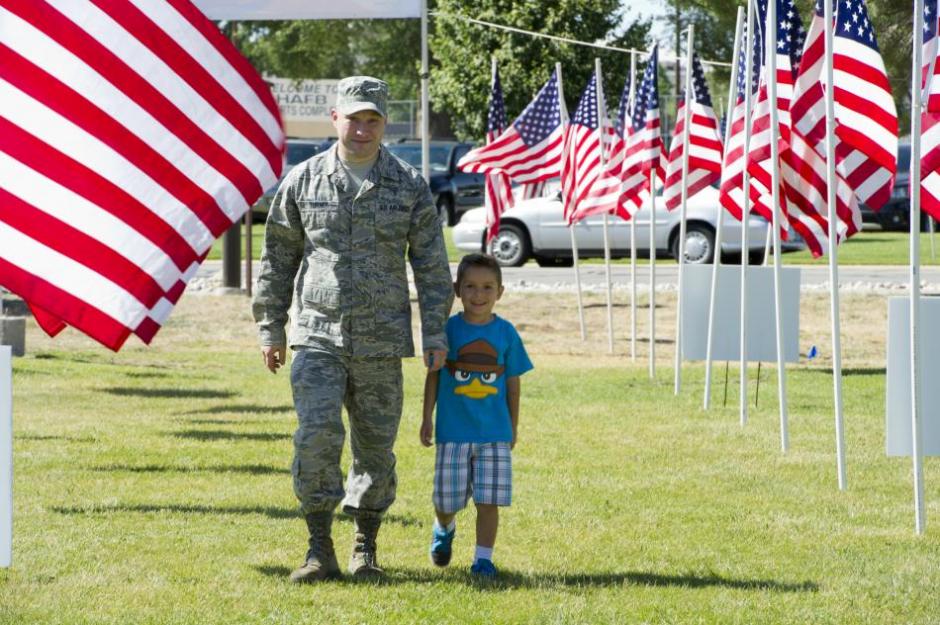Teachers at Olean City Schools in New York want to instill good character in students, so they invited local veterans in to area schools to show their appreciation, and model the proper way to give thanks to those who fought for freedom.
“I think the word hopefully everybody took away is not only thankfulness, but pride,” East View Elementary School Principal Brian Crawford told the Olean Times Herald. “Pride in your country, pride for your service, but also pride in your school.”
Second grade teachers at East View organized an assembly shortly before Veterans Day to cap off a week-long show of appreciation for military veterans that also included hallway decorating and letters sent to VA hospitals.
The school holds monthly assemblies as part of the district’s character education program with a focus on a different virtue each month. For November, the theme is gratitude.
“It goes well with Thanksgiving at the end of the month, and with Veterans Day also being in November, the second-grade (teachers) really wanted to tie the two together,” Crawford told the news site. “They deserve all the credit because they planned a very heartfelt and meaningful assembly.”
At East View, teacher Brian Martin and volunteer Harold Linza invited local veterans to speak with students, who learned how to offer thanks with a firm handshake and a gift of cookies. U.S. Army Sgt. Geoffrey Thomas was among those who attended, and the experience at East View was rewarding in more ways than one.
“It was nice to see they did this segment on veterans and military personnel, and I was glad I as able to come in and be a part of it,” Thomas said, adding that his two children, third grader Rian and pre-kindergartner Olyvia, attend the school.
“With me being in the Army, when Rian gets to do things like this, I’m not always around,” he said. “So being able to be here and be around and a part of it was a lot of fun and good for him.”
At Washington West Elementary School, first graders shared a similar experience with World War II veteran Edward Mohr, uncle of the school’s library aide Rose Herenda. Mohr, 95, was drafted as a 20-year-old working with the Civilian Conservation Corps and rose to the rank of sergeant in the U.S. Army, the Times Herald reports.
Washington West students prodded Mohr with questions about his time in the service and examined his many service medals, which include the Good Conduct Medal, American Campaign Medal, Asiatic-Pacific Campaign Medal, World War II Victory Medal, Philippine Liberation Medal, and the New York Medal for Merit.
Students wanted to know why he joined the military.
“They sent you a letter,” he explained. “It said, ‘Greetings, we want you in the service,’ and that’s where you went.”
“The little kids were great,” Mohr told the Times Herald. “They had some good questions.”
Intergenerational gratitude is an especially powerful way to build community bonds.
University of Virginia sociologist James Hunter writes in The Tragedy of Moral Education in America:
A morality conceptualized without basic links to a living creed and a lived community means that the espoused morality entails few if any psychic costs; it lacks, in any case, the social and spiritual sanctions that can make morality binding on our conscience and behavior.
By strengthening ties to the past through gratitude for military veterans, East View teachers and officials are binding students’ morality to a shared, lived community that clearly values the virtues of good character, while also honoring the sacrifices that paid for their freedoms.










